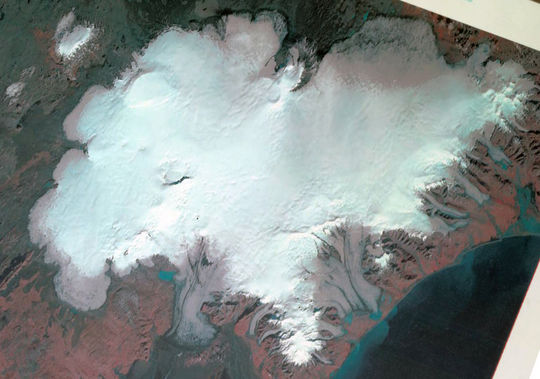
The science and even meteorological community are watching Bárðarbunga very carefully these days as stirrings from deep below the surface of Iceland are occurring. Yet another small earthquake occurred beneath the volcano just this morning but technically, there’s no real eruption. It’s more of a simmer. The question however is, is there one true eruption building? If so, many of you are asking, could it effect our winter ahead?

Source/Credit: Iceland Met Office
Back in spring 2010 we saw the big eruption of Eyjafjallajökull which did spew ash all the way to the stratosphere and THAT can and may well have attributed to the UK’s coldest December (2010) on record, mainly leading to enhanced high latitude/North Atlantic blocking. Because it occurred in 2010, it didn’t effect the first of two nasty winters (2009-10).

Source/Credit: Njaelkies Lea
[s2If current_user_can(access_s2member_level1)]
While there are some good signals to a cold winter upcoming with the return of a warm AMO (not cold like last winter), downturn in solar (solar max occurred last winter) and the (central Pacific or modoki style) El Nino, a full-scale eruption in Iceland would certainly help BUT, until there’s a true eruption and we know how high the ash cloud rises into the atmosphere, we cannot make that call or assumption. Only time will tell.
Notice the AMO was negative last winter while back in the cold winter’s of 2008-09, 2009-10 and 2010-11 it was positive.

Source/Credit: Joe D’Aleo
The AMO in fact peaked in it’s warm phase right in between our two worst winter’s since the late 1970s.
While we’re heading towards a more easterly QBO which leads to more stratospheric warming events and high latitude blocking, a proper and I mean proper eruption in Iceland in which the materials/ash reach the stratosphere, THEN we could see a deeper or enhanced EASTERLY QBO. Last winter was strong westerly which led to a zonal flow and no blocking across the North Atlantic. The fact the Atlantic went cold, albeit brief, probably helped stop any block over Greenland.

More on the Icelandic volcano!
What is Bárðarbunga?
Information on the central volcano
There are about 30 known central volcanoes, or volcanic systems, in Iceland. Bárðarbunga, the second highest mountain of Iceland; ca 2000 meters above sea-level, is one of them. The volcano is placed in northwestern Vatnajökull ice cap and therefore covered with ice.
The enormous size and nature of Bárðarbunga was not fully recognized until it was observed in 1973 on an image from a satellite, 800 km above Earth (see below). A caldera in the volcano’s crown, 11 km long on the longer side, is covered with approximately 850 m thick glacial ice. Eruptions related to the central volcano can occur anywhere in the caldera, on the sides of the volcano and also in the fissure swarms to the NA and SW of the volcano, for a distance up to 100 km from the central volcano.
Inevitably, immense eruptions and explosive eruptions are a possibility in the system with imminent threat of ice melting in great magnitude causing a huge jökulhlaup (glacial outburst flood). It is presumed that Jökulsárgljúfur and Ásbyrgi (see NLSI leita) were created in such cataclysmic events in prehistoric times. Large jökulhlaup in Kelduhverfi in the 17th century are believed to be related to volcanic activity in Bárðarbunga.
Over the last seven years, seismic activity has been gradually increasing in Bárðarbunga and the fissure swarm north of the volcano. This activity diminished after the Grímsvötn eruption in May 2011, but soon after, the activity started to gradually increase again. The current seismic activity began 16th August 2014.
Detailed chapter in English on Bárðarbunga
Because of the current seismic activity in nortwestern Vatnajökull, IMO has been allowed to distribute the chapter Bárðarbunga System, an extract from a much larger work in progress:
In 2011, the Icelandic government approved a proposal by the Minister for the Environment for the preparation of a general risk assessment regarding volcanic eruptions in Iceland. The initial three years have focussed on an appraisal of current knowledge and initial assessment. It will take 15–20 years to complete and require a joint effort by various institutions.
The proposal was based on an estimate made by the Icelandic Meteorological Office in collaboration with the Civil Protection Department of the National Commissioner of the Icelandic Police, the Institute of Earth Sciences at the University of Iceland, the Soil Conservation Service of Iceland and the Icelandic Road Administration.

Solar Cycle 24 On The Decrease!
Sunspot count (currently): 4

Source/Credit: landscheidt.info
So AO/NAO is turning more negative…
AO

NAO


The modoki El Nino which is anticipated this upcoming winter is important and occurred back in the winter of 2009-10.
WON’T HAVE A POST TOMORROW AS I’M TAKING THE DAY OFF. FULL UPDATE AGAIN SUNDAY!
[/s2If][s2If current_user_cannot(access_s2member_level1)][magicactionbox id=”18716″][/s2If]















Recent Comments